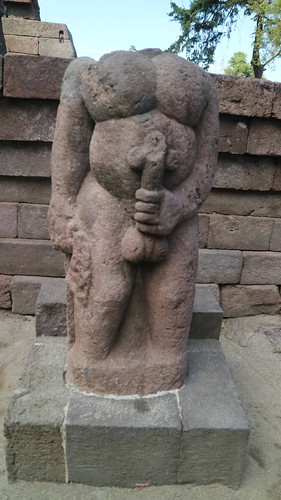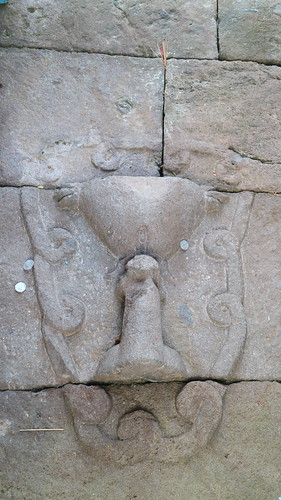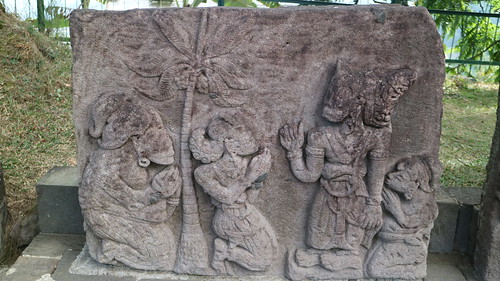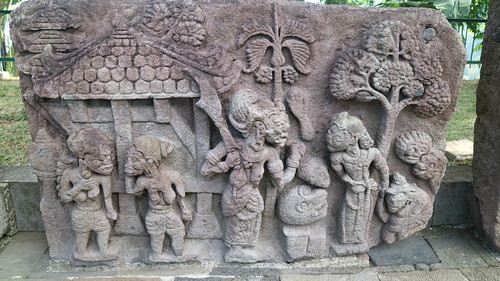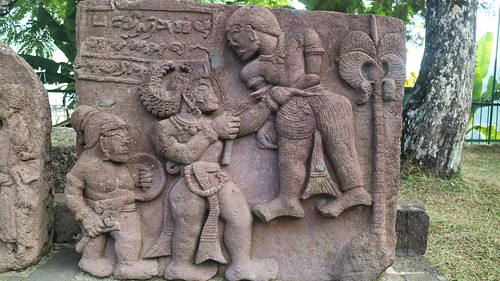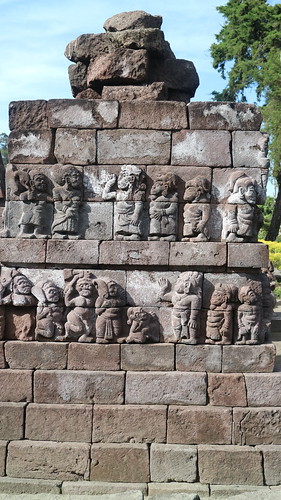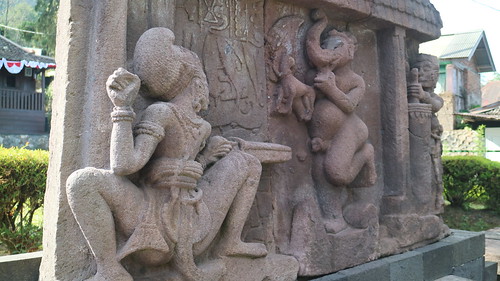1389. Tears poured out of the eyes of 9-year-old Princess Suhita at her grandfather’s funeral. Her grandfather had been doting on her since she was a baby. Shockingly, more people close to her would soon meet their end. What the little princess saw at the funeral of the greatest ruler of the Majapahit Empire, Hayam Wuruk, would scar her for life.
As the funeral pyre was lit, women who had looked after her since she was a baby walked into the fire dressed in ceremonial white gowns. She was shocked beyond words or tears. The flames swallowed the silent women. The smell of burning hair and flesh haunted her for the rest of her life.
Unlike most Asian dynasties and despite practising widow burning, the Hindu empire of Majapahit had several queens who were the ultimate authority of the land. Civil war plagued the empire after the death of Hayam Wuruk, its most powerful ruler. Princess Suhita’s mother, Queen Kusamawardhana and her husband Prince Wikramawardhani, fought against her uncle Prince Wirabumi for their share of Majapahit territory. Infighting led to the breakup of the empire. When governor Parameswara of Temasek tried to establish diplomatic ties with China without going through Majapahit, Wikramawardhani invaded. Parameswara abandoned Temasek and fled to Peninsula Malaya when he converted to Islam and changed his name to Iskandar Shah.
After her uncle and her brother were killed in the long-drawn civil war, Princess Suhita’s parents abdicated in 1400 and made her Queen Suhita of Majapahit, which was by then in swift decline as vassals started ignoring orders from the former nerve centre. That same year, Parameswara, aka Iskandar Shah established the Malacca Sultanate which conveniently pulled sea traffic away from the Majapahit port of Tuban (west of today’s Surabaya).
Queen Suhita was a capable woman, but she inherited a mess from her parents. She first sought to clean up the port businesses, rooting out corruption and profiteering. She also valued discipline and honesty – something which she saw in the growing Muslim community that prayed five times a day and seldom got drunk. She readily granted them permission to build mosques.
When Hindu priests protested, the queen designed and ordered the construction of two Hindu temples. The priests were temporarily appeased but when they approached the two temples under construction, they were shocked. Suhita’s temples were full of phallic and yoni symbols taken from tantric texts. She employed female designers to supervise the stonemasons, saying that women have better ideas about what is erotic. The temples had little to do with Hinduism. In fact, it was a deliberate affront to conventional Hindu rituals which she abhorred. Being childless, she materialised her hidden obsession with monuments that would become fertility shrines.
Ironically, Suhita’s progressive and enlightened views would pave the way for the fall of Majapahit. Her successors completed the construction of her temples after her death in 1450. But the imperial court descended into chaos as her brother Kertawijaya sat on the throne for only 4 years before he died. His sons, Suhita’s nephews, fought among themselves until King Brajiwa prevailed. By then, Majapahit’s once powerful navy was in shambles and they had little left to trade with China. When the Portuguese arrived, they discovered what a great empire and technologically advanced empire Majapahit used to be. Majapahit mariners had mapped the oceans more accurately than the Europeans did. The Portuguese had stumbled upon a maritime empire which once ruled Java, Sumatra, Malaya, Borneo, Bali, Lombok, Sumbawa and beyond. However, after surveying the situation on the group, the Portuguese decided that Malacca was more strategic and worthy of their occupation. Trading in Majapahit ports declined further.
The 16th century saw a rapid growth in the Muslim population of Java. These pious and disciplined folks which Queen Suhita once admired started getting intolerant towards the infidels. From their headquarters in Demak which prospered with arrival of Arab traders, they staged a jihad against Majapahit. That would be the final nail on Majapahit’s coffin. The once great empire was obliterated, the temples destroyed and the palace burned to the ground in 1527.
Now let’s take a look at Queen Suhita’s legacy – two enigmatic temples with an erotic theme. Located on the often misty western slope of Gunung Lawu, at a site 910m above sea level, lies the ruins of a mysterious and somewhat bizarre Hindu temple – Candi Sukuh. The date of its construction has been estimated to be around 1437. It was a time when the formerly glorious Hindu empire was fading away. As Majapahit burned to the ground and Islam reigned over its ashes, Candi Sukuh became scavenged and abandoned after 1527.
It was not till 1815 that Candi Sukuh was rediscovered by a British resident by the name of Johnson. The discovery was reported to Java’s Lieutenant Governor TS Raffles who ordered its restoration.
Bearing a curious resemblance to Mayan cultural sites in Mexico and Inca cultural sites in Peru, Candi Sukuh has little in common with the Hindu shrines in other parts of Indonesia. Another striking difference is the direction of Candi Sukuh. Extremely unusual for a temple that worships Lord Shiva, it faces the west instead of the east, so the best time for photos is in the late afternoon.
One explanation offered for such irregularities is that Hinduism was well in decline by then and Javanese builders reverted to their animistic origins. I find this explanation illogical. If they could not recall something as recent as the golden age of their culture, how could they have recalled the culture of their distant ancestors? The influence must have been recent to the time of construction. The temple is still replete with sculptures depicting Ruwatan stories from Hindu epics with familiar features like Garuda statues, turtle altars and images of Sudamala (ritual purification). Going against traditional style and design was a deliberate act of defiance against Hindu norms on the part of Queen Suhita.
What’s truly intriguing about Candi Sukuh is its sexual theme. While it is common for phallic symbols to appear in Shiva temples in India, the depiction is usually discreet. Candi Sukuh is explicit if not downright vulgar.
In fact, there was once a phallic statue 1.8m high on this site. It has been removed and housed in a museum in Jakarta. Queen Suhita had not lived to see the temples she designed completed. Why did her successors complete it for her? Did they share her rebellious streak against Hindu practices? Or did they see some other purpose in completing the project she started to improve Majapahit fertility rate?
Structure and Relief of Candi Sukuh
The temple complex covering an area of 5,500 m2 is surrounded by the typical greenery of lower tropical highlands. The entire temple complex, in its restored form, has three levels or terraces. The original temple could have had more.
1st terrace
The “first” terrace of Candi Sukuh is recognized by the main gate. It sits on a mound, so there could have been other terraces below it. The blue gate you see at the top was built after its restoration to protect an image on the floor.
Carved out in stone on the floor, is an image of a lingam and yoni on the verge of penetration. This explicit display gives the visitor a most impactful introduction to the theme on which Candi Sukuh was built. According to one legend, insecure Javanese men who had been away from home used to force their wives to jump over this image.
If her sarong fell off, it meant that she had not been faithful. Apparently, even Muslim men dragged their suspected wives here. Did Majapahit kings hope that Muslims would like this temple enough to forget that it belonged to infidels?
Of course this fidelity test is not practised today anymore. Otherwise, someone would be getting rich at the entrance, selling safety pins.
2nd terrace
Most parts of the second terrace cannot be found. Like most ancient temples, the bricks must have been carted away and used for building homes. There could have been an archway. There could have been a complete step pyramid. Nobody can be sure what the original looked like.
Aligned on the left side of the temple, is a disjointed row of somewhat incomplete stone reliefs depicting scenes from Javanese wayang kulit or shadow puppetry. The stories depicted don’t necessarily follow the Hindu epics. The relief below shows the goddess Uma whose face was suddenly deformed when a curse was placed on her.
The next relief shows the sorceress Sadewa tied to a tree by demons. In front of her stood the demoness Batara Durga brandishing a sword and escorted by a group of demons. Actually, Batara Durga was the goddess Uma. She and other deities had been cursed (for being unfaithful) and they took on the appearance of demons.
When Sadewa struggled to free herself, she managed to dispel the curse on Batar Durga and her followers. The group recovered their normal appearances as deities. The goddess Uma was back to being herself.
As a reward, Sadewa was conferred the title of Sudamala (purifier) by the goddess Uma. The relief shows that the goddess Uma and her followers had recovered their appearances as gods. Sadewa is seen paying her respects to them.
The relief above depicts a scene from a meeting between Sadewa and her follower with the blind priest Tambrapetra from Prangalas and his son Ni Padapa with a clown. Goddess of Uma instructed Sadewa to marry the priest’s son. After they got married, Sadewa cured the priest of his blindness.
In a somewhat unrelated scene, the last relief shows a giant named Kalantaka raised and stabbed by Bima, Sadewa’s brother. The Javanese inscription says that this relief was completed in 1449.
Anyone who is familiar with Javanese antiquities would quickly notice that these carvings and sculptures are like kindergarten drawings compared to the highly sophisticated and detailed artwork at Prambanan and Borobudur. The obvious explanation is that the Majapahit rajas at that time were rapidly losing their master craftsmen as Islam forbids the worship of devas.
3rd terrace
Going further up to the 3rd terrace, the explorer enters the main courtyard of Candi Sukuh. This concourse is decorated with reliefs on the left and statues that dominate the right. This is the most sacred and important part of Candi Sukuh.
On the left side there are rows of reliefs that seem to depict Javanese mythology featuring Kidung Sudamala with Pandawa Lima, Yudhistira, Bima, Arjuna, Nakula and Sadewa.
Also depicted, is a Ruwatan procession that was commonly carried out by the Hindu religious community at that time and even today, it is still practised by the local community, even with Muslim participation.
On the other side of the terrace, is single complete panel showing Lord Ganesh in a dancing pose, genitals revealed. The same goes to other animals in the reliefs. To enter this temple today, you need to wear a sarong to show respect for Hinduism. Ironically, Queen Suhita built it to mock the Hindu priests. The next temple is Candi Ceto located at the foot of Gunung Lawu.





